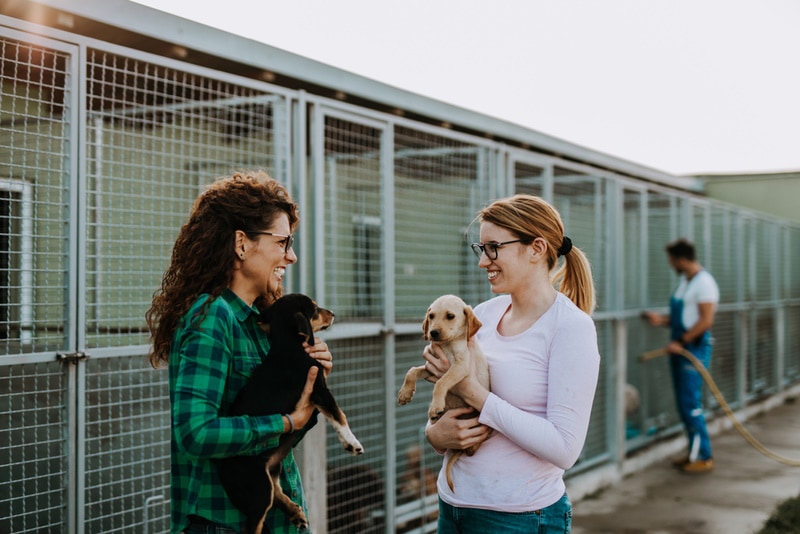
Adopting a Traumatized Dog: A Journey to Healing
Share
For those with a passion for animal welfare and an unwavering commitment to providing loving homes to pets in need, adopting a traumatized dog is a noble venture. However, it is not without its challenges. As a health-conscious pet owner, understanding the intricacies of this process can make a significant difference in the life of a traumatized dog.
Traumatized dogs often come with a history of neglect or abuse, making them wary of human interaction. For many health-conscious pet owners, taking in such a dog is not just about providing shelter, but also about nurturing their physical and emotional well-being. The journey of adopting a traumatized dog is one of patience, understanding, and healing.

Understanding the Impact of Trauma on Dogs
Trauma can manifest in various ways in dogs, affecting their behavior and health. Some may exhibit symptoms such as anxiety, aggression, or fearfulness. A comprehensive understanding of these symptoms is crucial for anyone considering adopting a traumatized dog.
The effects of trauma are not just psychological but can also impact a dogs physical health. Stress can weaken their immune system, making them more susceptible to illnesses. As a health-conscious pet owner, its essential to be aware of these potential health issues and to provide the necessary care to address them. Dog behavior post-adoption is a critical aspect to understand in this context.
Preparing Your Home for a Traumatized Dog
Creating a safe and nurturing environment is key to helping a traumatized dog adjust to their new home. This involves more than just providing food and shelter. Its about creating a space where the dog feels secure and can begin to trust again.
Start by designating a quiet area in your home where the dog can retreat to if they feel overwhelmed. This safe space should be equipped with all the essentials a comfortable bed, water, and toys. You might also consider using calming aids such as pheromone diffusers to help ease their anxiety. For more tips on preparing your home, visit Bringing a shelter dog home.
The Importance of Routine
Establishing a consistent routine is crucial for a traumatized dog. Routine provides a sense of predictability and security. This includes regular feeding times, walks, and play sessions. A predictable schedule helps reduce anxiety and fosters a sense of normalcy.
For health-conscious pet owners, incorporating activities that promote physical health is equally important. Regular exercise and a nutritious diet can significantly enhance the well-being of a traumatized dog.
Building Trust and Bonding
Building trust with a traumatized dog takes time and patience. Its important to approach them with a gentle demeanor and allow them to set the pace of interaction. Avoid forcing them into situations that may cause distress or fear.
Positive reinforcement is a powerful tool in this process. Rewarding good behavior with treats or praise can encourage them to engage more positively. For those interested in learning more about the adoption process, ASPCA adoption tips offer valuable insights.
Seeking Professional Help
If you find that your dogs trauma symptoms are severe or not improving, seeking the help of a professional dog trainer or behaviorist can be beneficial. These experts can provide tailored strategies to help your dog overcome their fears and adjust to their new environment.
Additionally, consulting with a veterinarian who understands the health implications of trauma can ensure your dog receives the appropriate medical care. For more on this topic, see How long does it take for a dog to adjust.
Celebrating Small Victories
Every small step towards recovery is a victory worth celebrating. Whether its a wag of the tail, a curious sniff, or a moment of playfulness, these are signs of progress and healing.
As a health-conscious pet owner, its important to recognize and celebrate these milestones, no matter how small. This not only encourages the dog but also strengthens the bond between you and your pet.
Conclusion
Adopting a traumatized dog is a journey filled with challenges and rewards. It requires patience, understanding, and a commitment to nurturing both the physical and emotional well-being of your new pet. For those willing to embark on this journey, the love and companionship of a rehabilitated dog are immeasurable rewards.
For further guidance on adopting a dog, visit RSPCA adoption process.

FAQs
What are the first steps when adopting a traumatized dog?
Start by preparing your home to be a safe and comforting environment. Establish a routine and ensure you have all the necessary supplies for the dog's well-being.
How can I help my dog adjust to their new home?
Patience and consistency are key. Allow them time to explore and adjust at their own pace. Use positive reinforcement to encourage trust-building behaviors.
Should I see a professional if my dog struggles with trauma?
If your dog shows severe symptoms or if you're unsure about handling their behavior, consulting a professional trainer or veterinarian can provide valuable guidance.
This article contains affiliate links. We may earn a commission at no extra cost to you.
